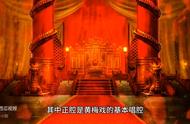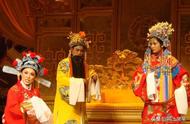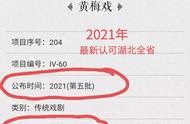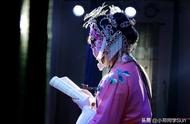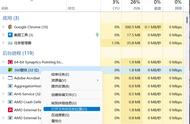黄梅戏,是中国五大戏曲剧种之一,是安徽省安庆市主要地方戏曲,黄梅戏的前身名为怀腔,是起源于皖赣鄂三省交界[1]一带的采茶调,又称黄梅调,在清中后期,采茶调与安徽省安庆府当地民间戏曲结合,并用安庆怀宁方言歌唱和念白,逐渐发展为一个新的戏曲剧种,当时称为怀腔,这就是早期的黄梅戏的雏形。其后怀腔又借鉴吸收了青阳腔和徽调的音乐、表演和剧目,开始演出“本戏”。后以安庆府怀宁县石牌镇为中心,并经过一百多年的发展,最终黄梅戏成为安徽主要的地方戏曲剧种,并且随着向周边的江西省九江市、湖北省黄冈市传播以后延伸,最终成为全国知名的大剧种。
Huangmei or Huangmei tone (黃梅戲 or 黃梅調, pinyin: Huángméixì or Huángméidiào) originated as a form of rural folksong and dance that has been in existence for the last 200 years and possibly longer. Huangmei opera is one of the most famous and mainstream opera in China (others are Beijing opera, Yue opera, Pin opera and Yu opera). The original Huangmei opera was sung by women when they were picking tea, and the opera was called the Picking Tea Song. In the late Qing dynasty, the songs came into Anhui Province— Huaining County adjacent regions, combined with the local folk art, Anqing dialect with singing and chants, and gradually developed into a newborn's operas. The music is performed with a pitch that hits high and stays high for the duration of the song. It is unique in the sense that it does not sound like the typical rhythmic Chinese opera.
The origins of Huangmei opera are not clear, and there is disagreement among scholars. About the only thing certain is that this style came from China. Generally accepted opinion is that the opera is from the junction of Anhui and Hubei and Jiangxi Province. It became a part of the operatic genre in the Anqing region of southwestern Anhui province. Anqing is the center of the opera and enrich the Huangmei Songs into a real drama. Huangmei opera did not involve the traditional opera gestures which often used the sleeves and step movements. It was also not performed on stage initially but as a kind of roving troupe performance.
,